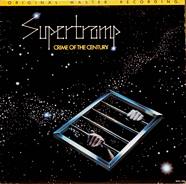
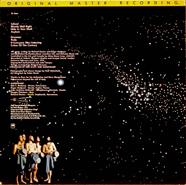
Analysis of Vinyl LP High-Frequency Content


Music:
This Analysis Focuses on the Bell Percussion sounds near the End of the Track (the Left Channel was used)
Playback Hardware:
|
Here is a 1.3 second long, 44.1 kHz 16 bit snippet (AIFF linear stereo PCM format) of the portion of the recording used for spectrum analysis. Click to play (the PCM file is 214 kB, you might need to wait a few seconds for it to load): A full-bandwidth, 192 kHz 24 bit version (.wav, linear stereo PCM, 1.3 MB) also is avaliable here. |
|
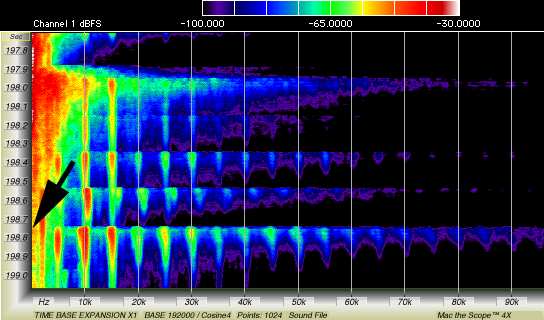
(Above) Spectrogram (Loudness vs. Frequency vs. Time)
Bell percussion, showing harmonic overtones extending to 96 kHz, which is the ADC Nyquist Limit at a 192 kHz Sample Rate

(Above) Spectrogram (Loudness vs. Frequency vs. Time); CD Format audio, on same frequency scale
Bell harmonic overtones are wiped out, because the CD upper frequency "brickwall" limit is only 22.05 kHz (half the 44.1 kHz sample rate).
(Likewise, if using a 96 kHz sample rate, information below 48 kHz would not be preserved.)
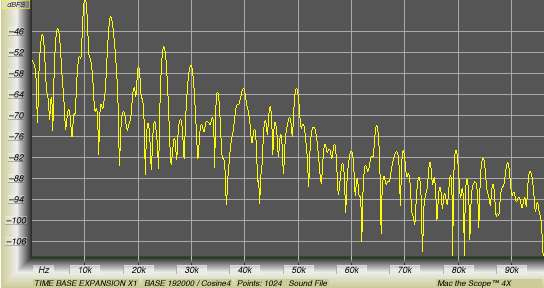
(Above) FFT "slice" of spectrogram, taken at peak bell amplitude (after arrow in spectrogram); 192 kHz source, expanded scale (minimum -110 dB)
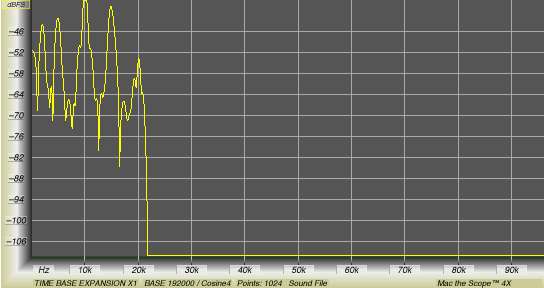
(Above) FFT "slice" of spectrogram, taken at peak bell amplitude (after arrow in spectrogram); CD format source, expanded scale (minimum -110 dB)
This shows the effect of the CD "brickwall" filter, removing all information above the Nyquist frequency (22.05 kHz at 44.1 kHz sample rate).
(in the spectrum trace above, digital zero maps to minus infinity, which is the mathematical definition of log(0)).
Click above thumbnail to view the waveforms of the recording.
Though the extended frequency response of the vinyl might seem incredible at first, consider that properly calibrated, professional, studio quality analog tape machines were essentially ruler-flat at high frequencies to at least 20 kHz. The roll-off rate above that frequency was dependent on the recording bias setting used, but ranged between just 6 to 12 dB per octave, much gentler than the unnatural CD "brickwall" filter. The upper frequency limit also depended on the tape speed used for recording, and the characteristics of the tape recorder heads, but even a fairly wide 0.25 mil recorder head gap permitted recording signals to over 100 kHz at 30 ips tape speed. The tape recording bias signal doesn't appear in the frequency plots as it is above the 96 kHz A/D converter bandwidth; professional recording studio tape machines used bias frequencies above 100 kHz and up to 432 kHz (for the Ampex ATR-100 deck). Also, the vinyl cutting lathe used in vinyl mastering usually used a 50 kHz 6 dB/octave lowpass filter to limit the cutter amplifier power at ultrasonic frequencies. A roll-off corner frequency at 50 kHz also can be discerned in the above graph of the 192 kHz version of the test recording.
© 2007 - 2008 Channel D All Rights Reserved